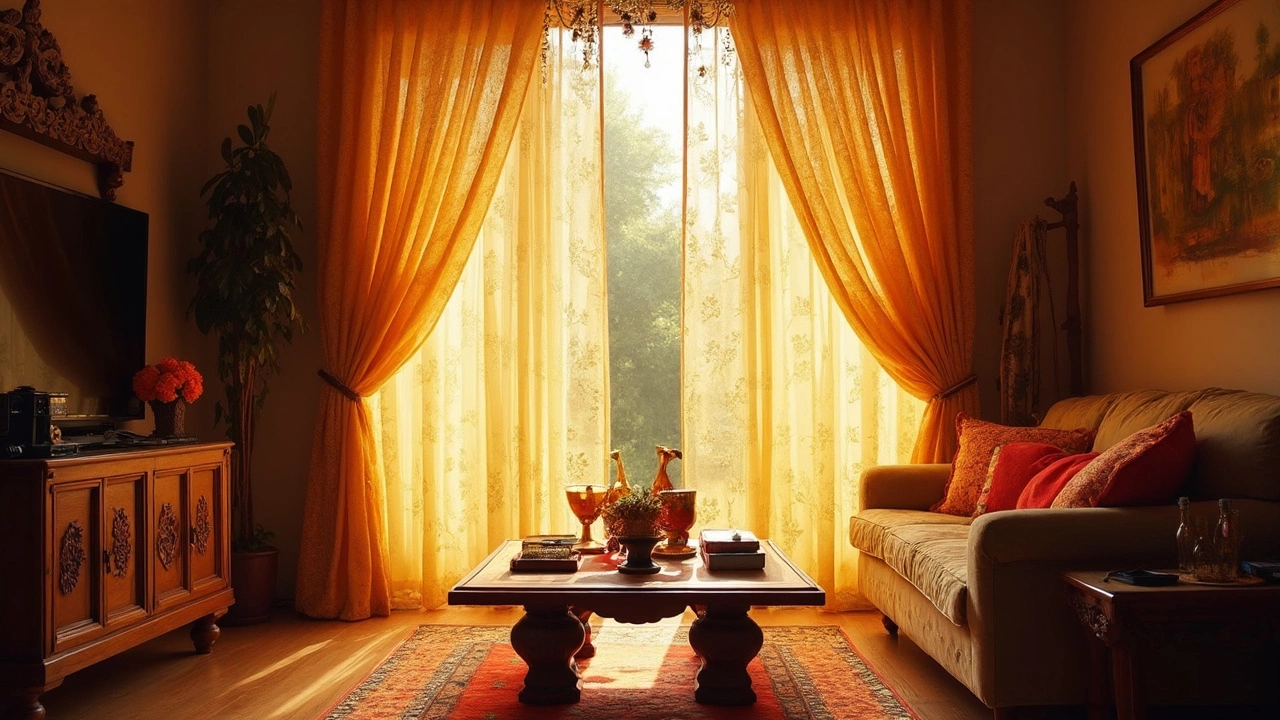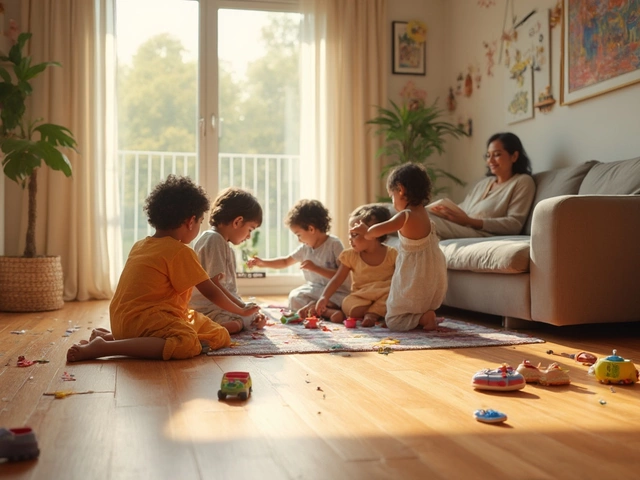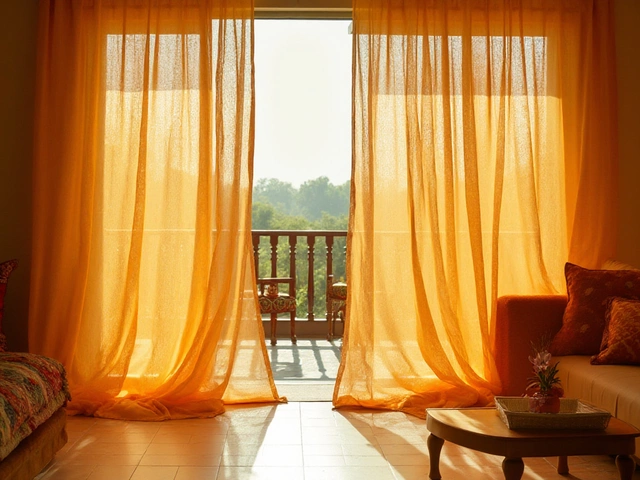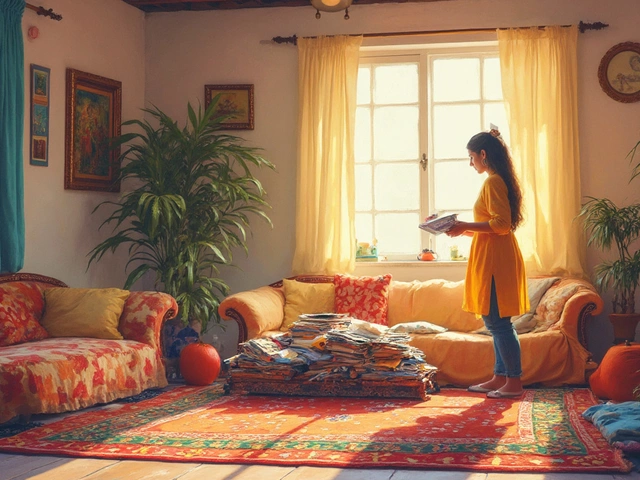Are curtains old-fashioned? Well, that depends on how you view them. If you imagine dusty drapes from your grandma's house, then yeah, maybe. But curtains have evolved a lot, and they can be as modern as anything else in your home. Nowadays, they're not just about blocking out light or prying eyes—they're a key part of interior design.
First off, consider their versatility. Curtains come in endless colors, styles, and materials. You can go bold with bright patterns or keep it sleek with neutral tones. Want to make ceilings look taller? Hang your curtains higher. Need some texture? Go for layered fabrics. The options are endless.
And let's not forget about practicality. Curtains are great insulators for windows. In the winter, they can help keep the warmth in, and during summer, they block the sun's heat. Plus, they provide that all-important privacy while still adding to the room’s aesthetic.
- Curtains and Their Historical Roots
- Modern Curtain Styles
- Advantages of Using Curtains
- Curtains vs. Other Window Treatments
- Incorporating Curtains into Modern Interiors
- DIY Curtain Ideas
Curtains and Their Historical Roots
Let’s take a little trip back in time. Curtains have been around for as long as people needed shelter and privacy, and they've always been more than just practical. We're talking way back, like thousands of years. The earliest versions weren't exactly the curtains you'd see in homes today. Ancient Egyptians, for instance, used animal hides and reeds to cover their windows to keep out the harsh sunlight.
Fast forward to medieval times, and curtains were already stepping up in the world. They became a symbol of wealth and power—a status thing. Back then, heavy materials like velvet and brocade draped the cold, drafty castle windows. These weren't just for show; they also helped keep rooms warm since central heating was definitely not a thing.
During the Renaissance, curtains truly started to resemble the ones we know today. It's like the fashion designers of that era said, "Hey, let’s make these things beautiful!" Fabrics became lighter and more decorative, reflecting the art and vibrancy of the period.
By the 19th century, as the Industrial Revolution picked up steam, curtains became more affordable and widespread. Thanks to mass production, more people could adorn their homes with elaborate drapes, making them a staple across England and beyond.
Towards the 20th century, curtains became even more integral to home decor, adapting to the changing tastes and needs of households. They evolved to match the shifting style trends, from Art Deco to minimalist designs.
So, when you think about it, from hiding from pharaohs' eyes to adding a cozy touch to our homes, curtains have been there, doing it all. These historical roots are part of why they continue to be a key player in home decor today.
Modern Curtain Styles
When it comes to modern curtain styles, the possibilities are practically endless. To begin with, let’s talk about the minimalist approach. Sleek and simple curtains with clean lines, often in neutral tones, are very much in vogue. They're perfect for those who favor a more understated look.
Natural Fabrics
Another big trend is the use of natural materials. Think about linen or cotton which not only look great but are also eco-friendly. They bring a relaxed vibe to any room while being sustainable. Plus, they’re breathable, making them a smart choice for homes in warmer climates.Bold Patterns and Colors
If you want to make a statement, consider bold patterns or vibrant colors that can serve as a focal point in the room. A popular choice often seen in magazines is geometric patterns. Paired with vibrant hues, they really pop and can transform a dull space into something exciting.Layered Curtains
This style offers both elegance and functionality. For a chic layered look, pair sheer curtains with heavier drapes. This layering not only looks sophisticated but also allows you to control light and privacy levels with ease.Window treatments are about more than just aesthetics, though. Think of them like the Swiss Army knife of home decor. Voice-activated curtains are a step into the future—integrating smart home technology for effortless control.
Here's a quick snapshot of the rising trends in curtain fabrics:
| Fabric | Popularity (%) |
|---|---|
| Linen | 35% |
| Cotton | 30% |
| Silk | 25% |
| Velvet | 10% |
All these modern styles prove that curtains aren’t just functional. They’re a powerful tool in interior design, redefining spaces by adding texture, color, and personality. So, embrace these trends and let your windows do the talking.
Advantages of Using Curtains
Curtains are more than just decorative elements. They offer a bunch of practical perks, some of which you might not have thought about. Let's break down why curtains remain a smart choice for your home, beyond their good looks.
Privacy and Light Control
One of the biggest perks of using curtains is the privacy they provide. You can block out the outside world when you need some personal space. Plus, they give you control over how much light you want in a room. Whether you want to dim the lights for a movie marathon or let the sun flood in, curtains let you do that easily.
Energy Efficiency
Here's a cool fact: curtains can help reduce your energy bills. Thick, insulated window treatments keep cold air out during winter and block out heat in the summer. That's less work for your heating or cooling systems and savings for you!
| Season | Energy Savings |
|---|---|
| Winter | Up to 10% on heating bills |
| Summer | Up to 7% on cooling costs |
Soundproofing
If you've got a noisy street or loud neighbors, curtains can help dampen the sound. Heavier materials like velvet are particularly effective at absorbing noise, making your home a quieter, more peaceful place.
Aesthetics and Style
From chic and minimalistic to bold and vibrant, interior design is all about personal expression. Curtains offer an affordable way to switch up your decor. Just by changing the color or style of your curtains, you can refresh an entire room's vibe without breaking the bank.
Versatility
Curtains aren't one-trick ponies. They come in various lengths, colors, and materials to suit different tastes and needs. You can even find outdoor-friendly curtains for your patio or balcony. With the right choice, home decor becomes way more versatile.
So, while technicolor blinds or electronic shades might seem futuristic, curtains have stood the test of time for a reason. Beyond their look, the benefits they bring to your home are invaluable.
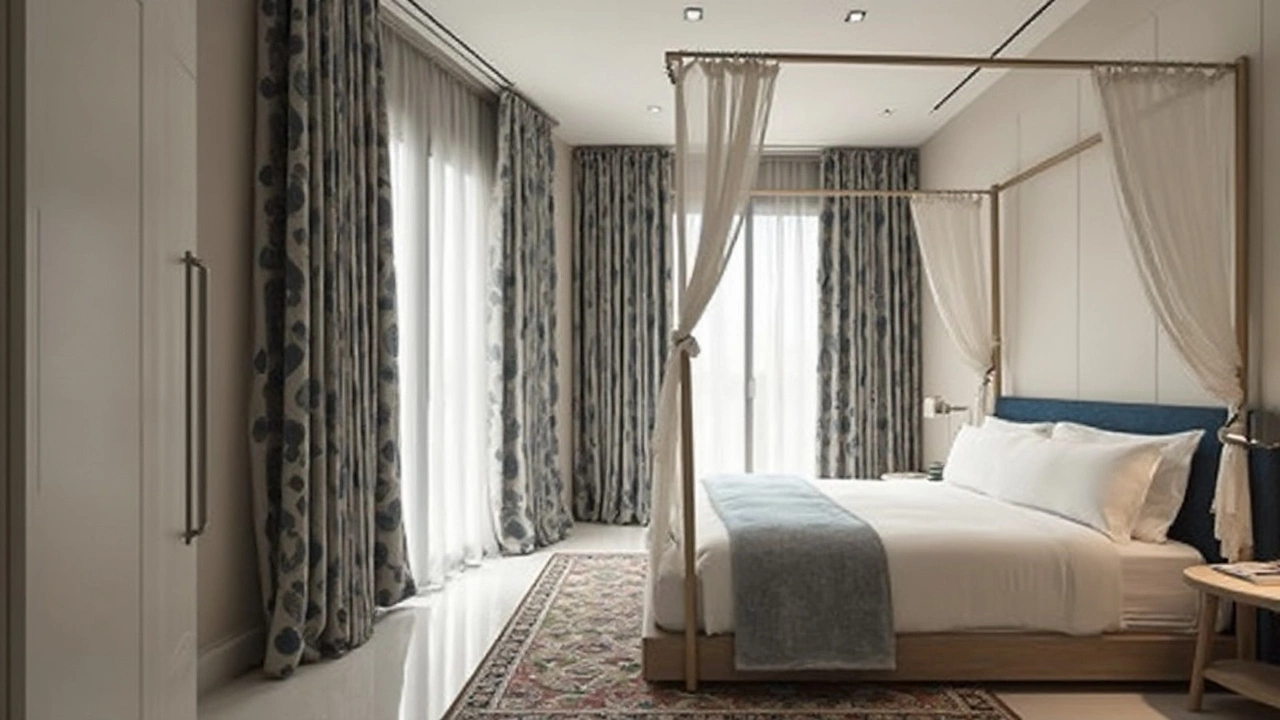
Curtains vs. Other Window Treatments
When it comes to dressing up your windows, you've got more options than just curtains. But how do they stack up against other choices? Let's throw some light on it.
Blinds
Blinds are probably the biggest contender against curtains. They’re sleek, adjustable, and great for controlling light. But they can lack the warmth and softness curtains bring to a room. Blinds are ideal for minimalistic or modern settings where a streamlined look is preferred.
- Durability: They're generally more durable than fabric due to materials like aluminum or PVC.
- Maintenance: Easier to clean—usually a quick wipe-down will do.
- Light Control: Offer precision with tilting slats for varying levels of brightness.
Shades
Then, you have shades, which roll or fold up neatly, offering a cleaner look than gathered fabric. But again, they miss out on the textural impact and depth that curtains provide.
- Variety: Available in a wide range, from Roman to roller shades.
- Space Saving: Neatly tucks away, which is great for small spaces.
- Efficiency: Provides excellent light control when layered with other treatments.
Shutters
Shutters add a touch of elegance and are relatively low-maintenance. While they bring a classic appeal, they're also more permanent and usually require professional installation. They can't be swapped out easily like curtains.
- Aesthetics: Offers a timeless, classic look.
- Insulation: Excellent for thermal insulation, outperforming other treatments.
- Installation: Typically requires professional fitting, unlike DIY curtains.
If we look at costs, curtains usually come out as a more economical choice versus shutters or custom shades, plus they allow for frequent changes to match trends or seasons.
Consider this stat: According to a 2022 home design study, 45% of homeowners still preferred curtains over other treatments for their living rooms, mainly due to their style flexibility and ease of updating.
So, while blinds and shades have their perks, especially for a modern vibe, curtains continue to hold their own with their unbeatable combination of style, warmth, and versatility.
Incorporating Curtains into Modern Interiors
So, you're ready to incorporate curtains into your modern interiors? Awesome choice! They’re not only functional but can really tie a room together. Let's get into how you can do this effectively.
Choose the Right Style and Material
Modern interior design is often about simplicity and clean lines. When choosing curtains, go for styles that complement this vibe. Consider materials like linen or cotton for a natural look. These fabrics are not just chic but also lightweight and easy to maintain.
Play with Colors and Patterns
Don't be afraid to play around with colors! If your room has a lot of neutral shades, a pop of color from your curtains can add some excitement. But if bold isn't your style, keeping it monochrome is absolutely fine too. Minimalistic prints can add subtle interest without overwhelming the space.
Use Curtains to Create Space
Got a small space? Hang your curtains closer to the ceiling rather than just above the window to make the walls look taller. This trick elongates the room, making it feel larger than it actually is.
Master the Layering Technique
Layering is big in modern design. You can pair sheer curtains with thicker blackout ones. This not only adds dimension but also gives you flexibility in controlling light and privacy.
Accessories and Hardware Matter
The curtain rod and accessories can do wonders for the overall look. Sleek metal rods can enhance a modern aesthetic, while tiebacks and clips can add a sophisticated touch.
A quick tip: Measure your windows accurately before buying. No one likes buying curtains that turn out to be too short!
DIY Curtain Ideas
Making your own curtains is not only a cost-effective option, but it’s a fun way to add a personal touch to your home decor. With a bit of creativity and some spare time, you can create unique curtains that suit your style and needs perfectly.
Choose Your Fabric
The first step in your DIY journey is selecting the right fabric. The type of fabric you choose for your curtains will affect their appearance and function. For a breezy, airy look, opt for lightweight materials like linen or cotton. If you're more about blocking out light, go for thicker fabrics like velvet or blackout material.
Simple Sew Curtains
Even if you're not a sewing expert, simple sew curtains can be a great place to start. Measure your windows, add a few inches for hems, and cut the fabric. You’ll sew a straight line to create hems and a pocket for the curtain rod. It’s really that simple!
No-Sew Options
If sewing isn’t your thing, there are no-sew options out there. Fabric glue and fusible bonding tape can help you achieve neat hems without a needle. These methods work well with home decor fabrics like burlap or drop cloths for a more rustic vibe.
Add Personal Touches
Once your basic curtains are ready, think about embellishing them for extra style. Adding trims like tassels or lace along the edges can make them look high-end. If you’re feeling artsy, stencil or paint a design onto your window treatments.
Repurpose and Upcycle
Don’t overlook items you already have. Old sheets, scarves, or even tablecloths can be transformed into beautiful curtains. This is a great way to incorporate patterns or colors you already love into a new setting.
Creative Curtain Rods
DIY isn’t limited to the fabric. Consider using unconventional items as curtain rods. A sturdy branch, a copper pipe, or even an old broom handle can be repurposed. It adds character to your space and can serve as a conversation starter.
Your DIY curtains can truly reflect your personal style and creativity. Plus, you'll save a few bucks while having the satisfaction of a job well done.
